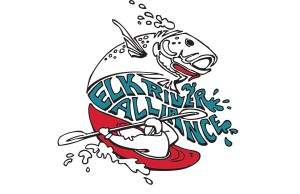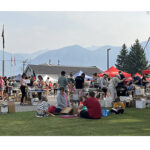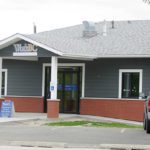Home »

Wetland enhancements help species at risk
Wetlands are natural areas that are wet for all or part of the year, often located along the valley bottom beside the Elk River.
Wetlands over the last 100 years in the Elk Valley have been fragmented by transportation corridors, filled in for development and drained for agriculture. People have done this without considering that wetlands provide numerous free and critical services to wildlife and us.
Wetlands soak up, slow down and store floodwater. Still water settles silt, and wetland plants, such as cattails, can filter pollutants and improving water quality. Conversely, wetlands help to reduce the severity of summer droughts as they slowly release stored water. Wetlands are places for fun and education, offering unparalleled wildlife viewing and recreational opportunities.
While people benefit from wetlands so do multiple species that call wetlands home for at least part of the year. Wetlands are some of the most productive ecosystems in the world, where nutrients accumulate supporting a diversity of plants and aquatic life. Think of wetlands as nurseries for raising young to juveniles and eventually adults. For example, dragonflies live as nymphs for years in wetlands but only a month as adults flying around before they mate and lay eggs back into the wetland. Wetlands are stopover sites for migratory birds along their north-south routes, where they rest and gain food energy.
Many Species at Risk (SAR) in Canada depend on wetlands for survival. SAR can be plants and animals that are at risk of becoming extinct due to outside pressures on their populations, such as habitat loss or pollution. In Canada there are 521 species listed, and up to a third of these are dependent on wetlands at some point in their lifecycle. In the Elk Valley SAR that utilize wetlands include great blue heron, westslope cutthroat trout, and western painted turtles.
The Elk River Alliance (ERA) has a number of projects on the go this spring to improve wetlands and the habitat they provide for SAR.
 In Hosmer, a partnership between ERA and the Nature Conservancy of Canada resulted in the construction of a five-hectare wetland, transforming a gravel pit into a wetland. In its infant stage, the wetland ecosystem, requires further planting and seeding in order for it to take off and create the habitat required for SAR including western painted turtles, American badgers and great blue heron.
In Hosmer, a partnership between ERA and the Nature Conservancy of Canada resulted in the construction of a five-hectare wetland, transforming a gravel pit into a wetland. In its infant stage, the wetland ecosystem, requires further planting and seeding in order for it to take off and create the habitat required for SAR including western painted turtles, American badgers and great blue heron.
In the West Fernie wetland a few enhancements will improve the success of nesting turtles. The western painted turtle population is vulnerable to human activities and is declining in B.C. Only one out of every ten nests laid survives to hatch, as most are dug up by predators or are laid in poor quality sites. Basking logs will be installed to give turtles a protective area to gain solar radiation.
Local students will be working with ERA to help with many of these enhancements this spring
To learn more about these upcoming projects and to get involved, contact the Elk River Alliance at [email protected].
The Elk River Alliance (ERA) is a non-profit, community-based water group dedicated to connecting people to the Elk River watershed keeping it drinkable, fishable and swimmable for future generations.
Above photo: Students from the Fernie Academy wrap trees to prevent beaver felling in the West Fernie Wetland. ERA photo
– Lee-Anne Walker, MA Environment and Management, is Community Water Champion and Executive Director of the Elk River Watershed Alliance (ERA)








